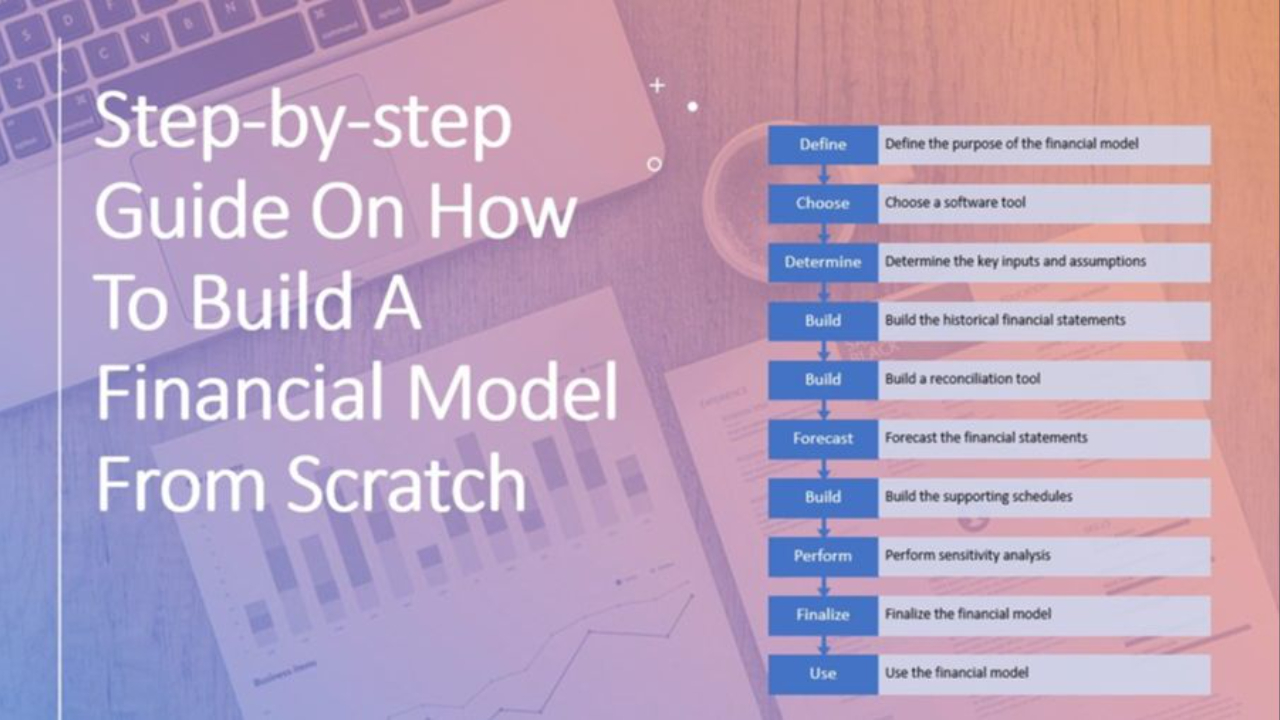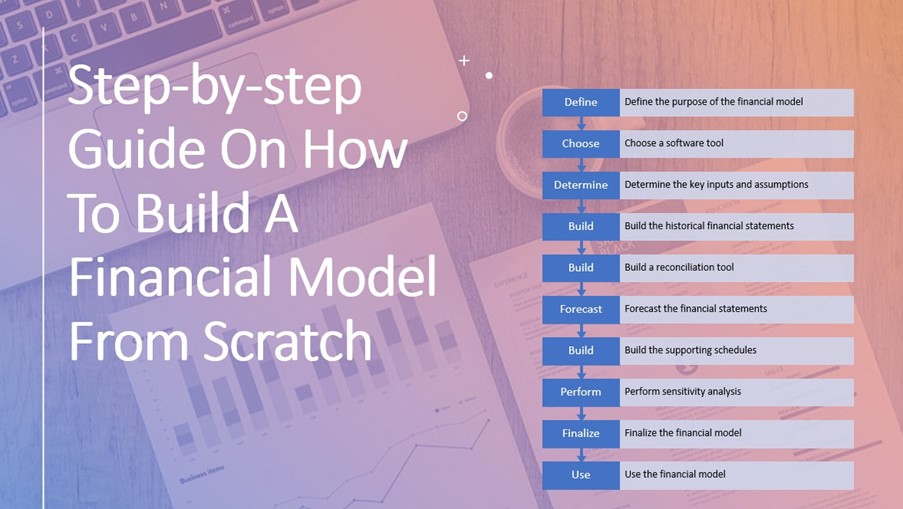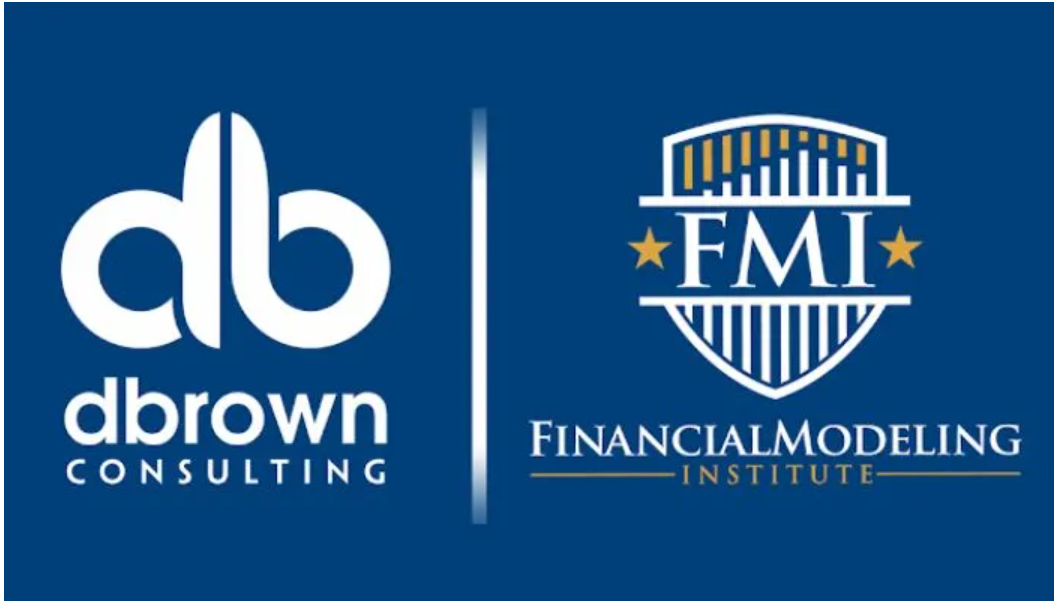How To Build a Financial Model from Scratch: A-step-by-step Guide
May 12, 2023
Financial modeling is the process of creating a mathematical representation of a company's financial situation. This mathematical representation is typically created in a spreadsheet program like Excel, and it considers various financial data points such as revenue, expenses, assets, and liabilities.
The purpose of financial modeling is to create a tool that can be used to make informed business decisions. By using a financial model, you can analyze the impact of different scenarios on your company's financial performance, such as changes in revenue or expenses, or the effects of taking on additional debt.
When building a financial model, it's important to use accurate data and assumptions and understand the model’s limitations. Sensitivity analysis is often used to test the model's robustness and to determine the most important drivers of the company's financial performance.
Step-by-step Guide On How To Build A Financial Model From Scratch:

- Define the purpose of the financial model: Before you start building a financial model, you need to have a clear understanding of why you need it. Are you building it for fundraising purposes or to analyze your company's financial performance? Defining the purpose will help you determine the scope of the model.
- Determine the key inputs and assumptions: Financial models are based on assumptions, and these assumptions are critical to the accuracy of the model. You need to determine the key inputs and assumptions such as revenue growth, cost of goods sold, operating expenses, capital expenditures, and other relevant variables.
- Choose a software tool: There are several software tools available that can help you build financial models, such as Excel, Google Sheets, or specialized financial modeling software. Choose a tool that best suits your needs.
- Build historical financial statements: The first step in building a financial model is to create historical financial statements for your company. This includes the income statement, balance sheet, and cash flow statement for the past 3-5 years. Use actual financial data from your accounting system to create these statements.
- Build a reconciliation tool: In financial modeling, a reconciliation tool is a method used to verify that the financial statements, such as the income statement, balance sheet, and cash flow statement, are accurate and consistent with each other. The process of reconciliation involves identifying the differences between two sets of data and then making adjustments to ensure that they match. In financial modeling, this means identifying any discrepancies between the financial statements and the underlying assumptions and then making adjustments to bring them into alignment.
- Forecast the financial statements: Once you have created the historical financial statements, you can start forecasting future financial statements. Use the key inputs and assumptions you determined earlier to forecast the revenue, expenses, and cash flows for the next 3-5 years.
- Build the supporting schedules: Supporting schedules include detailed schedules such as the debt schedule, depreciation schedule, and working capital schedule. These schedules help support the accuracy of the financial model and provide more granularity to the forecasted financial statements.
- Perform sensitivity analysis: Sensitivity analysis involves changing the key inputs and assumptions in the financial model to see how it affects the financial statements. This helps you understand the key drivers of your business and how changes in the business environment may impact your financial performance.
- Finalize the financial model: Once you have built the financial model and performed a sensitivity analysis, finalize the model by checking for errors, ensuring formulas are correct, and formatting the model for readability.
- Use the financial model: Use the financial model to make informed decisions about your business, such as identifying areas where you can cut costs or increase revenue.
Importance of Financial Modeling for different industries.

Here are a few examples of how financial modeling is used in different industries:
- Investment Banking: Financial modeling is a critical skill for investment bankers, who use it to value companies and analyze investment opportunities. Investment bankers use financial models to determine the value of companies that are being considered for mergers and acquisitions or to estimate the proceeds of an initial public offering (IPO).
- Corporate Finance: Financial modeling is also used extensively in corporate finance, particularly for budgeting and forecasting. Corporate finance professionals create financial models to project future revenue, expenses, and cash flows, which are used to make strategic decisions about investments, capital expenditures, and other financial matters.
- Real Estate: Real estate professionals use financial modeling to analyze investment opportunities in real estate. They create financial models to estimate the value of properties, project rental income, and forecast expenses such as property taxes and maintenance costs.
- Risk Management: Financial modeling is used in risk management to evaluate potential risks and to determine the impact of those risks on a company's financial performance. Financial models can be used to simulate various scenarios and to test the resilience of a company's financial position.
Skilled Financial Modelers are in high demand and are top earners in the Financial Industry. Being able to build accurate 3 statement models for industries makes one a valuable advisor to organizations and companies.
The Financial Modeling Academy will train, equip and accredit your skills as a Financial Modeler. This is a collaboration between dbrownconsulting and Financial Modeling Institute to offer a scholarship to African Students and Professionals to gain this coveted skill.

In this video, our Managing Partner David Brown, teaches a quick guide on how to build a 3-statement model from scratch. He has over 25 years of experience as a Financial Modeler.

